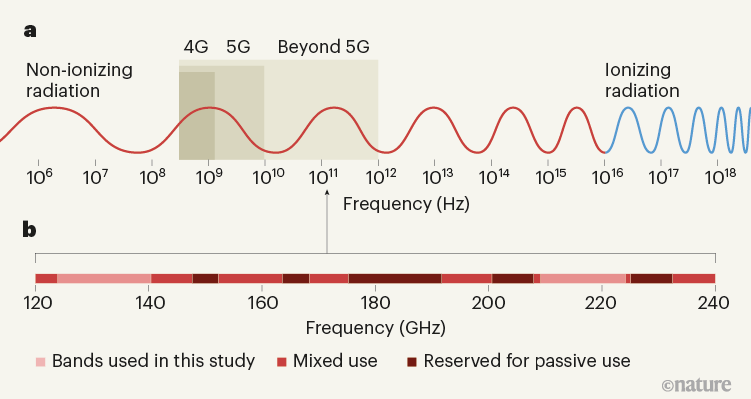 Dr. Janise McNair, associate professor in the Department of Electrical and Computer Engineering and Warren B. Nelms Institute member, recently authored a News & Views article published in Nature Magazine (Nature Portfolio). Dr. McNair’s article, titled “The 6G frequency switch that spares scientific services” is about sixth-generation (6G) spectrum-sharing and an experiment published in the new Nature Communications Engineering Journal.
Dr. Janise McNair, associate professor in the Department of Electrical and Computer Engineering and Warren B. Nelms Institute member, recently authored a News & Views article published in Nature Magazine (Nature Portfolio). Dr. McNair’s article, titled “The 6G frequency switch that spares scientific services” is about sixth-generation (6G) spectrum-sharing and an experiment published in the new Nature Communications Engineering Journal.
Dr. McNair explains:
“Smartphones are rarely used for talking. Data services are taking over the spectrum of frequencies reserved for wireless communications, and as the sixth-generation (6G) global network appears on the horizon, the demand for such services will require 6G allocations to be extended to higher frequencies than are used at present. In 2019, the US Federal Communications Commission (FCC) approved the commercial use of frequencies exceeding 100 gigahertz (1 GHz is 109 Hz), allowing the 6G extension (see go.nature.com/3kzs2sd). But such activity would interfere with passive signals that are used for scientific services, such as radio astronomy, space research and satellite systems. Writing in Communications Engineering, Polese et al. propose a way for active 6G applications to coexist with these passive services while using the same spectrum.”

Figure 1 | A dynamic strategy for high-frequency spectrum sharing. a, Sixth-generation (6G) wireless networks will need access to frequencies higher than those used by 4G and 5G, but still in the range of non-ionizing frequencies that are safe for human use. However, transmitting and receiving data at frequencies higher than 100 GHz (1 GHz is 109 Hz) disrupts passive scientific signals, such as those used for radio astronomy research. b, Polese et al.1 demonstrated a spectrum-sharing scheme in this range using an active 6G user and NASA’s Aura satellite as an example. The experiment senses the satellite and avoids interference by switching the active user between a lower frequency band at 123.5–140 GHz and an upper band at 210–225 GHz. These bands fall within the spectrum allocated for mixed use, which includes passive scientific services and active mobile services. The Aura sensors operate at frequencies higher than that of the upper band, but signals transmitted by the active user could extend up to 240 GHz, thus potentially interfering with the satellite, and necessitating a switch to the lower band.